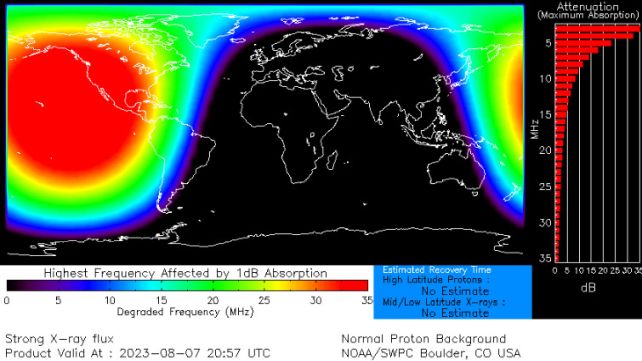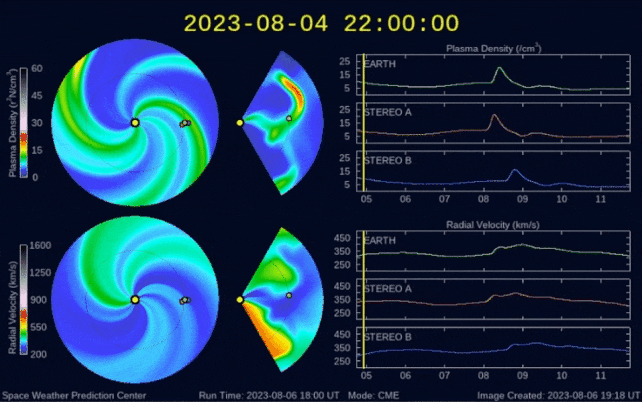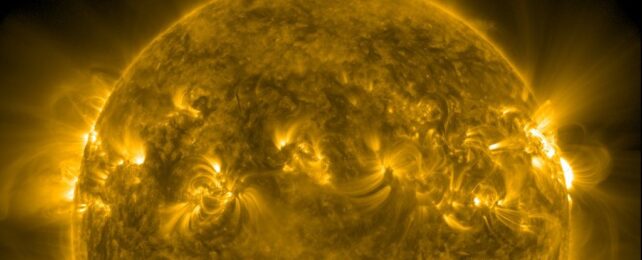A wild few days for the Sun are being felt around Earth as the effects of its tantrums lash us across the gulf of space.
On 7 August, the Sun unleashed a powerful, X-class flare that caused radio blackouts across North America.
Space weather forecasts also predicted a combined 'cannibal' coronal mass ejection (CME) that erupted several days ago on 5 August would clip our atmosphere in a glancing blow. While it might well still produce a late arriving solar storm, forecasters now suspect it may have missed altogether.
We might expect to see this sort of solar behavior increasing in the coming months, as the Sun escalates towards the peak of its 11-year activity cycle, predicted to take place in July 2025.
The Sun has been consistently spitting out daily eruptions for over 18 months now, but it's definitely ramping up. June and July each saw an X-class flare, the most powerful classification we have for solar flares.
Moreover, in July, we recorded an M-class flare – the second-most powerful – almost every day.
We're not even halfway through August, and we've already seen two X-class flares, and M-class flares every day; on 5 August, we saw, in addition to an X1.63 flare, two M-class flares and 9 less powerful C-class flares.
We're certainly living in interesting solar times.

The X1.5-class flare that caused radio blackouts on 7 August was emitted by a sunspot region right on the edge of the solar disk, about to rotate away from view.
Nevertheless, it hit Earth with such power that a radio blackout hit the North American continent and the Pacific ocean.
The 5 August flare also occurred from the edge of the disk; so far, no radio blackouts have been reported, although they may have occurred. However, the 5 August flare was accompanied by coronal mass ejections, which is when large amounts of material, in the order of billions of tons, are ejected out from the Sun into the Solar System.
On 5 August, what the Sun emitted is known as a cannibal CME. This is when two eruptions occur in relatively quick succession; and the second eruption, traveling faster than the first, overtakes and subsumes its predecessor, resulting in a more powerful wave of plasma and magnetic fields traveling through the Solar System.

Because it was emitted from the edge of the Sun, the blow this eruption is expected to deal to Earth is a glancing one. But from a cannibal CME, even a glazing blow is expected to deliver a pretty hefty geomagnetic storm. This is a temporary, but pretty significant, disturbance to Earth's magnetic field caused by an exchange of energy with the incoming solar material.
Actually, the magnetic field does a pretty good job of protecting Earth from the full brunt, so you're unlikely to notice much in your day-to-day. At night, though, we could be in for a treat: the influx of particles, interacting with Earth's atmosphere, is expected to put on a spectacular aurora show across Alaska, Canada, and the very northernmost parts of the US.
And keep your eye on space weather forecasts. We could be up for some very pretty nights in the near future, if the Sun keeps going the way it is.
